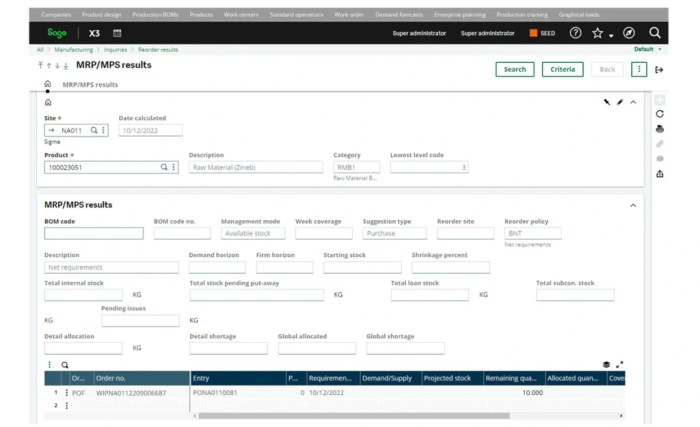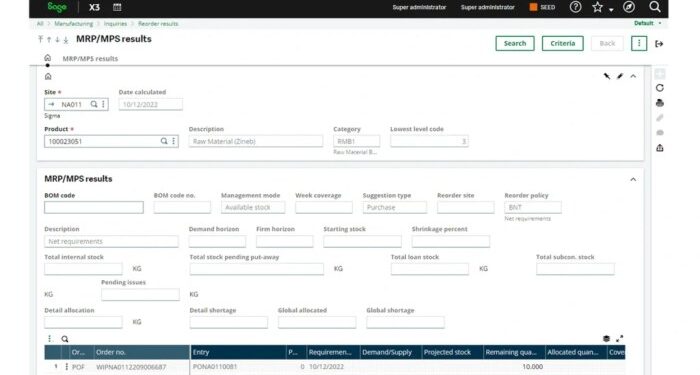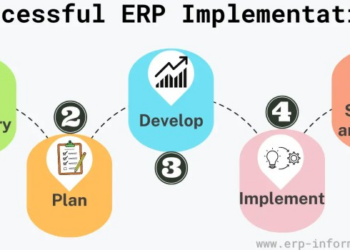Unlocking the potential of businesses, Sage ERP System stands as a cornerstone in revolutionizing operations and enhancing productivity. Let's delve into the realm of Sage ERP System and discover how it can reshape the landscape of modern enterprises.
The Sage ERP System is a comprehensive solution designed to streamline business processes, boost efficiency, and drive growth. In this guide, we will explore its key features, implementation strategies, customization options, and more.
Overview of Sage ERP System
Sage ERP System is a comprehensive software solution designed to help businesses manage and streamline their financials, operations, and resources effectively. It provides tools for accounting, inventory management, human resources, customer relationship management, and more.Using Sage ERP System is essential for businesses as it allows for better decision-making through real-time data analysis, improves operational efficiency by automating processes, enhances collaboration among departments, and ensures compliance with financial regulations.
Comparison with Other Software Solutions
Sage ERP System stands out from other similar software solutions in terms of its robust features and benefits. Here are some key points of comparison:
- Scalability: Sage ERP System can easily scale to accommodate the growth of businesses, unlike some other solutions with limited scalability.
- Customization: Sage ERP System offers a high level of customization to meet the specific needs of different industries, while some software solutions have rigid structures.
- Integration: Sage ERP System seamlessly integrates with various third-party applications and systems, providing a more connected and efficient work environment compared to other solutions with limited integration capabilities.
- Reporting and Analytics: Sage ERP System provides advanced reporting and analytics tools for better insights and decision-making, which may be lacking in other software solutions.
Key Features of Sage ERP System
Sage ERP System offers a range of key features that can help streamline business processes and improve efficiency for various industries.
1. Financial Management
- Track financial data accurately
- Automate invoicing and billing processes
- Generate financial reports easily
2. Inventory Management
- Monitor stock levels in real-time
- Automate inventory replenishment
- Optimize warehouse operations
3. Customer Relationship Management (CRM)
- Manage customer interactions efficiently
- Track sales leads and opportunities
- Improve customer satisfaction and retention
4. Business Intelligence
- Access real-time data analytics
- Generate customizable reports
- Make informed business decisions
5. Human Resources Management
- Manage employee information and payroll
- Automate HR processes
- Ensure compliance with labor laws
Implementation of Sage ERP System
Implementing Sage ERP System in a company is a crucial process that requires careful planning and execution to ensure a smooth transition and successful adoption. Below are the steps involved in implementing Sage ERP System, common challenges faced during the implementation process, and best practices for a successful implementation.
Steps Involved in Implementing Sage ERP System:
- Conduct a thorough analysis of the company's current processes and requirements to determine the scope of the implementation.
- Choose a project team with members from different departments to ensure representation and collaboration throughout the implementation.
- Select a reputable Sage ERP implementation partner or consultant to guide you through the process.
- Create a detailed implementation plan with clear timelines, milestones, and responsibilities for all team members.
- Configure the Sage ERP System according to the company's specific needs and requirements.
- Provide comprehensive training for all employees to ensure they are familiar with the new system and its functionalities.
- Perform thorough testing to identify and address any issues or bugs before the system goes live.
- Go live with the Sage ERP System and provide ongoing support and maintenance to ensure its optimal performance.
Common Challenges Faced During Implementation and How to Overcome Them:
- Lack of top management support and involvement: Ensure that key stakeholders are engaged throughout the process and understand the benefits of the new system.
- Data migration issues: Conduct a data cleanup and validation process before migrating data to the new system to prevent errors and inconsistencies.
- Resistance to change: Communicate with employees about the reasons for the implementation and provide training and support to help them adapt to the new system.
- Scope creep: Define clear project scope and objectives from the beginning to prevent unnecessary changes that can delay the implementation process.
Best Practices for a Successful Sage ERP System Implementation:
- Set clear goals and objectives for the implementation to measure success and track progress.
- Communicate regularly with all stakeholders to keep them informed and engaged throughout the process.
- Allocate sufficient time and resources for training to ensure employees are proficient in using the new system.
- Monitor key performance indicators (KPIs) to evaluate the impact of the Sage ERP System on the company's operations and profitability.
Customization and Integration

Customizing Sage ERP System is crucial for businesses to meet their specific needs and requirements. The system offers various options for customization, such as configuring workflows, adding custom fields, creating personalized reports, and designing unique user interfaces.
Custom Fields and Workflows
- Custom Fields: Businesses can add custom fields to capture additional data specific to their operations, such as project codes, customer preferences, or product specifications.
- Workflows: Sage ERP System allows users to customize workflows to streamline processes and ensure efficient task management, such as approval processes or order fulfilment workflows.
Personalized Reports and Dashboards
- Personalized Reports: Users can create custom reports to analyze data in a way that is most relevant to their business, enabling better decision-making and strategic planning.
- Dashboards: Businesses can design dashboards with key performance indicators (KPIs) and metrics that matter most to them, providing real-time insights for monitoring business performance.
Integration with Other Software Applications
Integrating Sage ERP System with other software applications is essential for achieving seamless data flow and communication between different systems. By integrating with tools like customer relationship management (CRM) software, e-commerce platforms, or inventory management systems, businesses can enhance efficiency, accuracy, and productivity.
Third-Party Integrations
- CRM Integration: Integrating Sage ERP System with CRM software like Salesforce or HubSpot enables businesses to manage customer relationships effectively and improve sales and marketing efforts.
- E-commerce Integration: Connecting Sage ERP System with e-commerce platforms like Shopify or Magento allows businesses to automate order processing, inventory management, and customer data synchronization.
- Payment Gateway Integration: Integrating Sage ERP System with payment gateways like PayPal or Stripe streamlines payment processing and enhances financial visibility and control.
Ultimate Conclusion
As we conclude our journey through the realm of Sage ERP System, it becomes evident that embracing this powerful tool can pave the way for unparalleled success in the dynamic world of business. With its robust features and seamless integrations, Sage ERP System remains a game-changer for enterprises aiming to thrive in a competitive market.
Questions Often Asked
Is Sage ERP System suitable for small businesses?
Yes, Sage ERP System offers scalable solutions that cater to the needs of small businesses, providing essential tools for growth and efficiency.
Can Sage ERP System be accessed remotely?
Absolutely, Sage ERP System offers cloud-based options for remote access, enabling users to manage operations from anywhere with an internet connection.
How long does it typically take to implement Sage ERP System?
The implementation timeline varies based on the size and complexity of the business, but it usually ranges from a few weeks to several months for a smooth transition.
Are training resources available for employees to learn Sage ERP System?
Yes, Sage provides training materials and resources to ensure employees are equipped with the knowledge needed to effectively utilize the ERP system.
Can Sage ERP System be integrated with e-commerce platforms?
Absolutely, Sage ERP System offers integration capabilities with various e-commerce platforms, enhancing the efficiency of online business operations.












